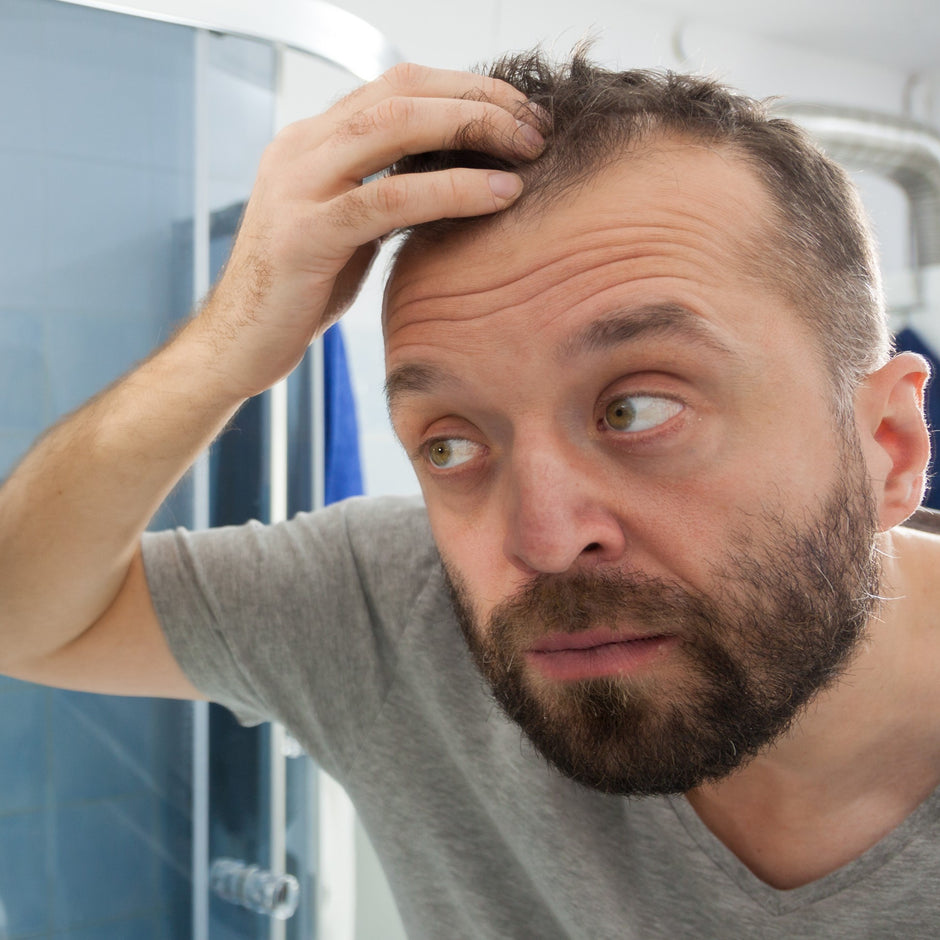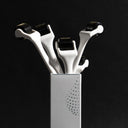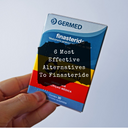Are you considering using minoxidil for temple hair loss?
This popular hair regrowth treatment is often sought after by those looking to reverse thinning hair at the temples, a common concern for many.
In this article, we’ll explore the effectiveness of minoxidil in treating temple hair loss and provide key insights into how you can incorporate it into your hair care routine.
Table of content
Does minoxidil grow hair on the temples?

While minoxidil is not guaranteed to grow hair on the temples, it may be worth a try for those suffering from hair loss.
In some cases, minoxidil may need to be used for several months before results are apparent.
If minoxidil does not work after six months, it is unlikely to be effective. As with any treatment, it is essential to consult a doctor before using minoxidil.
As your leading source for hair health information over the past 4 years, we never compromise on accuracy. When it comes to your health, you deserve information you can truly rely on - and earning your trust is our top priority.
Here's how Scandinavian Biolabs ensures every piece of content meets the highest standards of accuracy and integrity:
- Credentialed Experts: Our reviewers are actively practicing doctors and medical researchers
- Stringent Reviews: Content undergoes rigorous editing by subject specialists and review by a practicing doctor.
- Evidence-Based: We rely on well-established research from trusted scientific sources like peer-reviewed journals and health authorities.
- Full Transparency: Our editorial standards, writer credentials, reviewer credentials, correction process, and funding are all publicly documented.
- Independent Voice: While we do promote products, we operate in a vacuum to business operations. Our main goal is just an unwavering commitment to providing medically-sound guidance.
You can count on Scandinavian Biolabs to consistently deliver the trustworthy health information you deserve. Read our Editorial Standards.
What alternatives to minoxidil do you have for temple balding?
There are many options you have to prevent hair loss at the temples and encourage hair regrowth. These are some:
- Saw Palmetto
- Finasteride
- Hair Transplant (see hair transplant before and after)
- Nanoxidil
Not enough?
See the best alternatives to minoxidil!

How does minoxidil regrow temple hairline?
Investigators have proposed different hypotheses explaining the mechanism of action of minoxidil in treating hair loss.
One of the hypotheses is that minoxidil improves blood flow to the hair follicles in the scalp, in this case, the temples. There is an increase in cutaneous blood flow after 10-15 minutes of minoxidil application.
Minoxidil also upregulates the vascular endothelial growth factor (VEGF). This helps maintain the dermal papilla vasculature as well as promote their growth. VEGF accelerates hair growth by increasing perifollicular vascularization. Improved blood supply provides nutrients to the hair follicles, required for the growth of new hair.
The active metabolite of minoxidil, minoxidil sulfate, is thought to promote hair growth by opening the potassium channels. This prevents the inhibition of hair growth and mediates the onset of the anagen phase of the hair growth cycle.
Minoxidil is most effective when it is used early in the course of hair loss, and it is generally successful at regrowing temple balding hairline.
Studies on minoxidil and temples
Studies have shown that minoxidil can help to regrow up to 40% of lost hair.
Other studies on minoxidil usage on frontal hair loss have delivered promising results for both men and women.
What is temple hair loss?

Temple hair loss or frontal baldness usually is an early sign of androgenic alopecia. You might see hair thinning across the scalp area and a visible pattern hair loss on your temple.
Usually, you'll also see a receding hairline or a maturing hairline happening at the same time.
Temple hair loss happens in both female pattern hair loss and male pattern hair loss, but it's more prominent in men.
What is minoxidil?
Oral minoxidil was initially used for the treatment of hypertension. The physicians observed hypertrichosis as an outcome of treatment with minoxidil.
This led to the development of minoxidil liquid and minoxidil foam for topical application as a treatment option for hair loss.
The main ingredient in minoxidil is a vasodilator, which helps widen blood vessels and improve circulation.
This can be beneficial for hair growth, as it helps to bring nutrients and oxygen to the follicles.
Minoxidil is most commonly used to treat androgenetic alopecia.
However, it can also be effective against:
- Thinning hair
- Alopecia areata
- Traction alopecia
- Telogen effluvium

Side effects of using minoxidil
The common side effects that appear after topical minoxidil treatment of hair loss include hypertrichosis of the hands and face of the user. Other commonly reported side effects include itching of the scalp, erythema, increased dandruff, and contact allergic dermatitis.
There are more severe side effects of minoxidil sexually, physically and mentally.
To check allergy to any of the components, you may do a patch test prior to the treatment.
Which minoxidil should you use for temple hair loss?
Topical formulations of minoxidil including minoxidil foam and minoxidil solution are available as 2% and 5% formulations.
5% formulation has greater efficacy as compared to 2% formulation.
Minoxidil foam is a more efficacious and easy-to-apply formulation than minoxidil solution, which is associated with scalp irritation and takes longer to dry.
You can boost minoxidil results with the use of minoxidil & dermaroller.

Why do I see hair shedding after applying minoxidil?
Topical application of minoxidil may cause temporary shedding of the scalp hair. As the hair loss treatment commences, minoxidil stimulates a growth surge of the miniaturized follicles, which then induces the anagen phase of the hair growth cycle of the resting hair follicles.
The hair in the previous telogen phase is rapidly shed 2-8 weeks after the hair loss treatment begins. The temporary minoxidil shedding of the scalp hair reflects the beneficial effect of minoxidil on the hair follicles. The hair shedding usually subsides after a few weeks of treatment.
Reference
Umar, S., & Carter, M. J. (2021). A Multimodal Hair-Loss Treatment Strategy Using a New Topical Phytoactive Formulation: A Report of Five Cases. Case Reports in Dermatological Medicine, 2021, 1-12. https://doi.org/10.1155/2021/6659943
Mirmirani, P., Consolo, M., Oyetakin-White, P., Baron, E., Leahy, P., & Karnik, P. (2014). Similar response patterns to topical minoxidil foam 5% in frontal and vertex scalp of men with androgenetic alopecia: a microarray analysis. British Journal of Dermatology, 172(6), 1555-1561. https://doi.org/10.1111/bjd.13399
Badri, T., Nessel, T. A., & Dinesh Kumar D. (2021, December 19). Minoxidil. Nih.gov; StatPearls Publishing. https://www.ncbi.nlm.nih.gov/books/NBK482378/
Suchonwanit, P., Thammarucha, S., & Leerunyakul, K. (2019). Minoxidil and its use in hair disorders: a review. Drug Design, Development and Therapy, Volume 13, 2777-2786. https://doi.org/10.2147/dddt.s214907
Read more:






